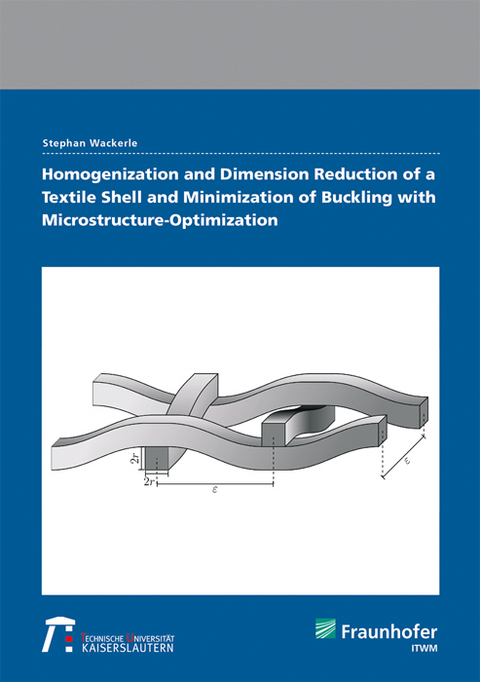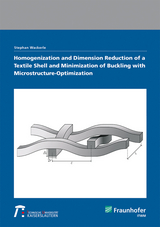Homogenization and Dimension Reduction of a Textile Shell and Minimization of Buckling with Microstructure-Optimization
Seiten
This thesis shows the homogenization and dimension reduction of a textile structure using the unfolding method. The limit is derived for different energy regimes, namely linear elasticity and the nonlinear von-Karman regime. In the subsequent part the homogenized model is the basis to investigate and optimize the textile with respect to buckling.
The topic of this thesis originated in the task to optimize a belt-shaped textile structure with respect to buckling. The approach is divided into two main steps: asymptotic analysis and optimization. First, we show the simultaneous homogenization and dimension reduction for the textile elasticity problem using the unfolding method. In particular, the effective model is derived for different energy regimes, depending on periodicity, applied force and fiber-to-fiber contact. The different energy regimes use different approaches, where for linear elasticity variational inequalities are used, while the nonlinear von-Karman regimes requires arguments of the Gamma-Convergence to derive the limit problem.
In the second part the resulting homogenized problem gives rise to an effective textile plate problem and the corresponding cell problems. The cell problems connect macroscopic textile properties and the microscopic ones, namely the fibers, their contact and weaving pattern. This allows to use a macroscopic buckling model for further investigation and optimization. Eventually, the cell problems yield the corresponding microscopic properties for a buckling optimized textile.
The topic of this thesis originated in the task to optimize a belt-shaped textile structure with respect to buckling. The approach is divided into two main steps: asymptotic analysis and optimization. First, we show the simultaneous homogenization and dimension reduction for the textile elasticity problem using the unfolding method. In particular, the effective model is derived for different energy regimes, depending on periodicity, applied force and fiber-to-fiber contact. The different energy regimes use different approaches, where for linear elasticity variational inequalities are used, while the nonlinear von-Karman regimes requires arguments of the Gamma-Convergence to derive the limit problem.
In the second part the resulting homogenized problem gives rise to an effective textile plate problem and the corresponding cell problems. The cell problems connect macroscopic textile properties and the microscopic ones, namely the fibers, their contact and weaving pattern. This allows to use a macroscopic buckling model for further investigation and optimization. Eventually, the cell problems yield the corresponding microscopic properties for a buckling optimized textile.
| Erscheinungsdatum | 24.08.2021 |
|---|---|
| Zusatzinfo | num., mostly col. illus.a and tab. |
| Verlagsort | Stuttgart |
| Sprache | englisch |
| Maße | 148 x 210 mm |
| Themenwelt | Mathematik / Informatik ► Informatik |
| Mathematik / Informatik ► Mathematik ► Analysis | |
| Schlagworte | B • differential calculus & equation • dimension reduction • Fraunhofer ITWM • Functional analysis & transforms • homogenization • Ingenieur • Ingenieure • Mathematical Modelling • Mathematiker • Optimization • Physiker • variational calculus |
| ISBN-10 | 3-8396-1704-9 / 3839617049 |
| ISBN-13 | 978-3-8396-1704-5 / 9783839617045 |
| Zustand | Neuware |
| Haben Sie eine Frage zum Produkt? |
Mehr entdecken
aus dem Bereich
aus dem Bereich
Buch | Softcover (2024)
De Gruyter Oldenbourg (Verlag)
59,95 €




